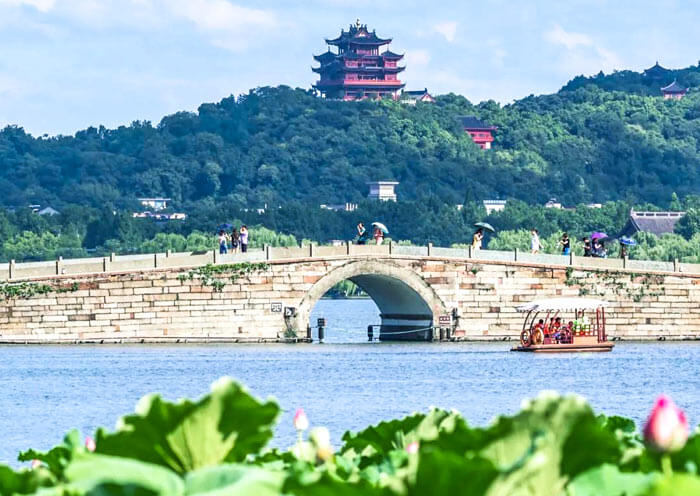Highly recommended for families seeking history and nature. The desert experience at Shapotou was unforgettable, and seeing the massive Western Xia Tombs gave us a real history lesson. The highlight was tasting the excellent wine at Xige Winery—a pleasant surprise in China's west! The tour was well-organized, and the guide and driver were exceptional, ensuring a smooth and enjoyable journey.
- Highlights
- Itinerary
- Price
- Trip Notes
- Accommodation
- Photos
- Reviews
From the bustling metropolis of Shanghai, a short half-hour journey by high-speed train transports you to a different world - Suzhou. This ancient city, often referred to as "Heaven on Earth" or the "backyard of Shanghai", is a treasure trove of poetic landscapes and intriguing cultural stories waiting to be discovered.
Suzhou, steeped in over 2,500 years of history, is a testament to the timeless beauty of China. As an old Chinese poem beautifully captures, "In all the fair land of Suzhou, river-houses in view, old palaces crowd in little space, bridges bloom across narrow alley's grace." This description perfectly encapsulates the charm of Suzhou, a city where past and present, nature and architecture, blend seamlessly.
The city's magic lies in its classical gardens, where harmony and elegance take center stage. The ancient Tiger Hill whispers legends of a thousand years, and the romantic ambiance of Shantang Street under the moonlight is nothing short of enchanting.
Suzhou is not just a city, but an experience. Whether you're a history buff, an architecture enthusiast, a nature lover, or a food connoisseur, Suzhou has something to captivate your senses. So, why wait? Take a Suzhou day trip from Shanghai to delve into this poetic city's soul. The mesmerizing beauty of its gardens, canals, and historical echoes are waiting to weave you into its timeless narrative. Suzhou, the city of gardens, is beckoning. Will you answer the call?




Itinerary at a Glance
Shanghai
Suzhou (1 Day)
Humble Administrator’s Garden, Suzhou Museum, Tiger Hill, Shantang Street, Suzhou Garden Museum, Pingjiang Road Canal Boat Trip
Itinerary Day by Day
This morning, your guide will meet you in the hotel lobby and escort you to Shanghai high speed train station for your bullet train to Suzhou (about 0.5 hour, 90km). Welcome to Suzhou, reputed as the "City of Gardens" and "Venice of the East," offering an elegant and picturesque atmosphere. Upon arrival in Suzhou, you will be escorted to explore this charming, poetic city.
Your first stop is a brief visit to the Suzhou Garden Museum to gain a clear understanding of the Classical Gardens of Suzhou, which consist of nine gardens in the historic city of Suzhou listed as a UNESCO World Heritage Site. Then, continue your discovery at the serene Humble Administrator’s Garden, the largest garden in Suzhou, which is considered one of the greatest examples of quintessential Chinese landscape design.
Built in 1509, Humble Administrator's Garden is the finest example of a Ming Dynasty garden. Retired magistrate Wang Xianchen created this masterpiece over 16 years. He named it to reflect his desire for a humble life after public service. The garden has three sections: the expansive Eastern Garden, the distinguished Central Garden, and the exquisite Western buildings. With its ponds, rockeries, trees, and pavilions, the garden unveils scenic views like an unrolling scroll painting. As you meander along the circular route, be impressed by the intimate courtyards, elegant architectural details, and majestic artisan stonework while immersing yourself in the gorgeous poems depicted in each architecture. These poems reflect the notable attitudes of the owners. The Orchid Snow Hall, the main hall in the eastern part of the garden, gets its name from Li Bai's poem verse "Alone between heaven and earth, the clear breeze scatters the orchid snow" (独立天地间,清风洒兰雪), implying a pure and lofty character. Walking along the path, you will come to the House of Sweet-Scented Osmanthus, the main building in the garden, named after Zhou Dunyi's essay "In Love with the Lotus" (香远益清,亭亭净植), implying noble and elegant virtues. Overlooking the fan-shaped "With Whom Shall I Sit in the Pavilion", you will evoke the atmosphere of Su Dongpo's poem "With whom shall I sit? The bright moon, the fresh breeze, and I" (与谁同坐?明月清风我). Continuing your journey, you will reach Jianshan Hall, named after the poem by Tao Yuanming "Gathering chrysanthemums by the eastern hedge, I contentedly gaze upon the southern mountains" (采菊东篱下,悠然见南山). Every step in this poetic atmosphere is accompanied by architecture that tells a story through its connection to a poem.
Important tips for appreciating and photographing Suzhou Gardens:
1. Begin by observing the overall layout and composition of the garden from the map. This will give you an impression of the main themes and designs.
2. Take a tour of the garden with an open mind to appreciate its essence. Pay attention to the use of spatial techniques like borrowed scenery, facing scenery, leaked scenery etc.
3. Notice the architecture - its layout, forms, and how it complements other elements like plants, rocks, water. Understand the cultural significance behind the designs.
4. Spend time comprehending the mood and emotions conveyed through the names of the buildings and their accompanying couplets.
5. Look out for scenic views that capture the seasonal beauty of the garden.
6. Frame and photograph interesting perspectives using the garden's structures and scenery.
To delve into over 2500 years of history, you will visit Suzhou Museum, boasting remarkable architecture and impressive collections. Designed by the world-renowned architect I.M. Pei, this museum seamlessly blends classical and modern elements, preserving the traditional white powdered walls of Suzhou to evoke a classical ambiance while exuding a contemporary sensibility. The museum's distinct contours, strong geometry, and captivating silhouettes are truly awe-inspiring. As you step into the museum, you will find yourself enchanted by the beauty that filters through windows and dances with the rays of light. The scenery constantly evolves, creating a dynamic and captivating experience. While exploring the museum's halls, you will encounter a rich display of local Suzhou crafts and cultural artifacts from the Wu region. Among the treasures showcased is the renowned Sword of King Yu of Wu, along with other exquisite pieces like lacquerware, bamboo carvings, jade carvings, gold bricks, clay sculptures, and musical instruments.
After lunch, you will visit the iconic Suzhou landmark - Tiger Hill (Hu Qiu), known as the "Number One Mountain in Wu Region". This site holds cultural significance related to prominent Tang Dynasty poet Bai Juyi. He oversaw the excavation of the Shantang River, forming Shantang Street and creating the poetic transportation route of "Seven Li Shantang to Tiger Hill". “From the road leading to Kaishan Temple, water and land traffic frequently intermingled. Silver bridles guided spirited horses, while flower boats carried beautiful women” (自开山寺路,水陆往来频。银勒牵骄马,花船载丽人). At Tiger Hill, marvel at the renowned Tiger Hill Pagoda, the oldest surviving brick pagoda in China and sole remaining structure from the Five Dynasties period. Its architectural style embodies Tang and Song aesthetics. Tiger Hill Pagoda is often called the "Leaning Tower of China." Also explore the Sword Pond at Tiger Hill, said to be the entrance to the tomb of King Helü of Wu with three thousand treasure swords buried below. As described in a poem, "Bizarre rocks with a thousand monks seated, a mystical pond where a sword rests deep. The Hai Dang Pavilion on both sides, the mountain at the heart of the temple" (怪石千僧坐,灵池一剑沉。海当亭两面,山在寺中心).
After that, let’s take a traditionally decorated boat along the Pingjiang Road Canal for about 30-40 minutes. This boat tour allows you to experience the romance of "When you come to Suzhou, every household lives along the river," immersing yourself in the relaxed pace of life that has defined Suzhou for centuries.
Next, enjoy a leisurely stroll down Shantang Street, reputedly "Suzhou's No. 1 Ancient Street," with over 1,100 years of history. As you explore, you'll discover various shops, temples, shrines, pagodas, memorial archways, guild halls, mansions, bridges, and traditional Chinese architecture. Be sure to visit the Bai Juyi Memorial Hall to see artifacts and learn about this prominent historical figure who built the street. While wandering, don’t forget to try local Suzhou snacks for an authentic taste of the region.
After the tour, you will be escorted to Suzhou bullet train station for your high speed train to Shanghai (about 0.5 hour). Then, it is time to end your 1-day Suzhou Tour from Shanghai by High Speed Train. Your guide will escort you to your hotel or the airport/train station for your flight or high speed train to your next destination.
Thank you for choosing Asia Odyssey Travel (AOT) for your China tour, and we are always here working for you and hope to see you again for your next trip to China/Asia.
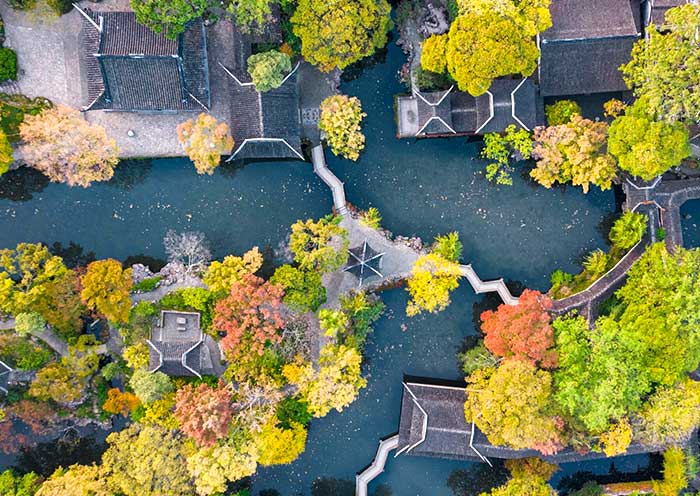
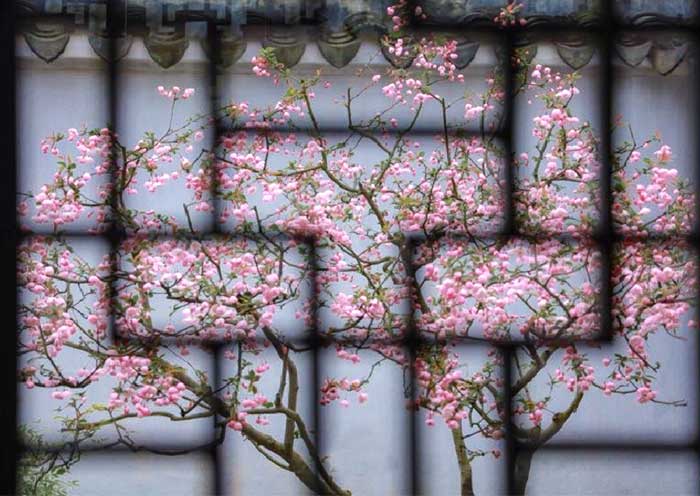
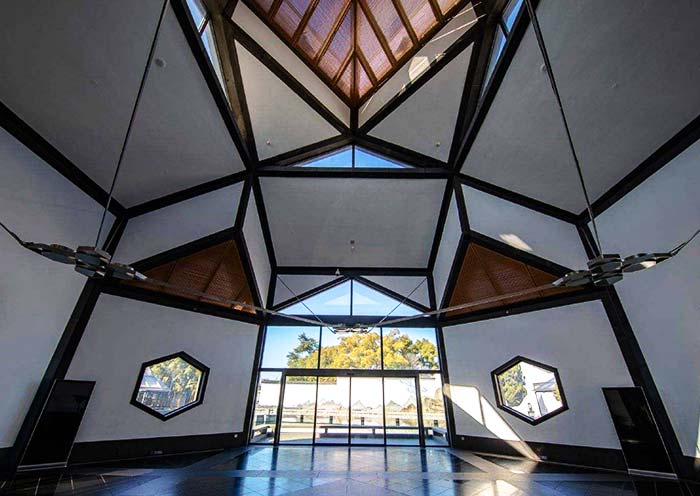

Price: What’s Included & What’s Excluded
What’s Included?
What’s Excluded?
Important Trip Notes for Booking a Private China Tour
Accommodation & Hotel Condition for Your China Tour
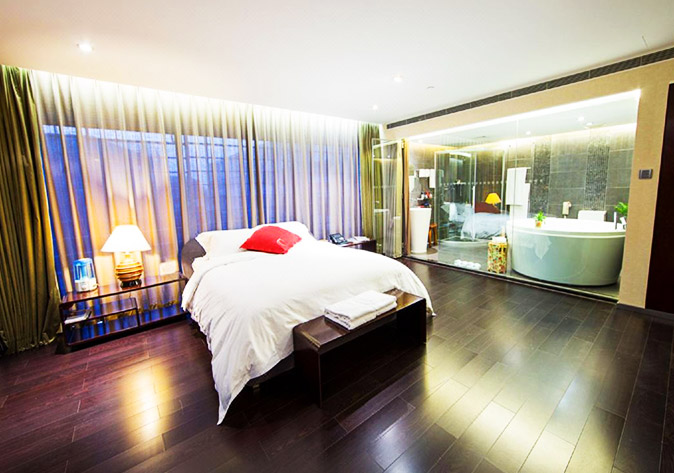



Photo Gallery for This Itinerary
Latest Suzhou Tours Reviews from Our Customers

Aisha
Malaysia
Destination(s): Ningxia
Date of Experience: Sep 02, 2025
Tour Customized by: Nicole
You May be Interested in This Tour: 5 Days Classic Ningxia Tour - Shapotou Desert, Yellow River & Lost Kingdoms

Emily Johnson
USA
Expert guides and seamless logistics made our trip truly exceptional. Highly recommended! The Tengger Desert's colorful lakes were a surreal highlight after an unforgettable night camping under Shapotou's starry sky. The history, wine, and off-roading created a perfect, diverse adventure.
Destination(s): Ningxia
Date of Experience: Oct 09, 2025
Tour Customized by: Anthony
You May be Interested in This Tour: 6 Days Ningxia Odyssey Tour: Desert Camping & Off-road to Colorful Lakes

Ryan Tan
Singapore
The perfect mix of history, wine tasting, and desert adventures, especially camping in Shapotou under the stars. Highlights included the stunning Western Xia Tombs and Xige Winery. Truly unique and well-organized—highly recommended!
Destination(s): Ningxia
Date of Experience: Jun 12, 2025
Tour Customized by: Danny
You May be Interested in This Tour: 6 Days Ningxia Wine Tour with Desert Camping in Shapotou
Price: Request
(Based on a private tour for two people. Price varies depending on program, travel date, number of people.)
Free Enquiry! You don’t need to pay for the reservation.
- United States (+1)
- Australia (+61)
- Singapore (+65)
- Malaysia (+60)
- Philippines (+63)
- Canada (+1)
- Italy (+39)
- Indonesia (+62)
- United Kingdom (+44)
- Spain (+34)
- Mexico (+52)
- Hong Kong (+852)
- Thailand (+66)
- United Arab Emirates (+971)
- New Zealand (+64)
- South Africa (+27)
- Germany (+49)
- Brazil (+55)
- India (+91)
- France (+33)
- Vietnam (+84)
- The Netherlands (+31)
- Saudi Arabia (+966)
- Ireland (+353)
- Argentina (+54)
- Switzerland (+41)
- Romania (+40)
- Pakistan (+92)
- Japan (+81)
- Portugal (+351)
- Bangladesh (+880)
- South Korea (+82)
- Puerto Rico (+1)
- Türkiye (+90)
- China (+86)
- Belgium (+32)
- Qatar (+974)
- Greece (+30)
- Taiwan (+886)
- Austria (+43)
- Poland (+48)
- Israel (+972)
- Chile (+56)
- Sri Lanka (+94)
- Nigeria (+234)
- Peru (+51)
- Colombia (+57)
- Hungary (+36)
- Nepal (+977)
- Denmark (+45)
- Bulgaria (+359)
- Norway (+47)
- Slovenia (+383)
- Sweden (+46)
- Kuwait (+965)
- Costa Rica (+506)
- Ecuador (+593)
- Venezuela (+58)
- Malta (+356)
- Croatia (+385)
- Tunisia (+216)
- Czechia (+420)
- Mongolia (+976)
- Bahrain (+973)
- Mauritius (+230)
- Papua New Guinea (+675)
- Cambodia (+855)
- Dominican Republic (+1)
- Luxembourg (+352)
- Finland (+358)
- Guatemala (+502)
- Myanmar (+95)
- Maldives (+960)
- Slovakia (+421)
- Laos (+856)
- Serbia (+381)
- Brunei (+673)
- Oman (+968)
- Macao (+853)
- Panama (+507)
- Morocco (+212)
- Jordan (+962)
- Georgia (+995)
- Fiji (+679)
- Bolivia (+591)
- Lithuania (+370)
- Bahamas (+1)
- Cyprus (+357)
- Latvia (+371)
- Bhutan (+975)
- Iraq (+964)
- Iran (+98)
- Kenya (+254)
- Jamaica (+1)
- Zimbabwe (+263)
- Azerbaijan (+994)
- Uruguay (+598)
- Estonia (+372)
- Andorra (+376)
- Cameroon (+237)
- Ghana (+233)
- Kazakhstan (+7)
- Nicaragua (+505)
- Egypt (+20)
- Russia (+7)
- Albania (+355)
- Réunion (+262)
- Montenegro (+382)
- Algeria (+213)
- Afghanistan (+93)
- Martinique (+596)
- Uganda (+256)
- Honduras (+504)
- North Macedonia (+389)
- Trinidad and Tobago (+1)
- Suriname (+597)
- Antigua and Barbuda (+1)
- Zambia (+260)
- Ukraine (+380)
- Armenia (+374)
- Barbados (+1)
- Belarus (+375)
- Palestine (+970)
- Lesotho (+266)
- Moldova (+373)
- Ethiopia (+251)
- French Polynesia (+689)
- Gambia (+220)
- Guam (+1)
- Gibraltar (+350)
- Isle of Man (+44)
- New Caledonia (+687)
- El Salvador (+503)
- Comoros (+269)
- Seychelles (+248)
- Chad (+235)
- Samoa (+685)
- Cook Islands (+682)
- Palau (+680)
- Paraguay (+595)
- DR Congo (+243)
- Solomon Islands (+677)







